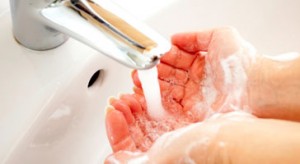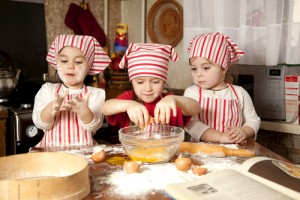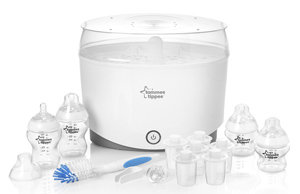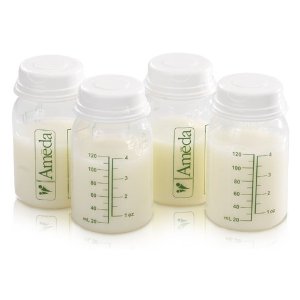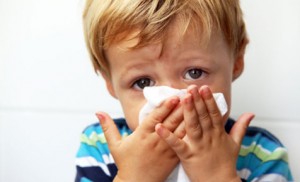Preparing Food Safely for Infant and Young Children
Infants and young children under five years old are especially vulnerable to foodborne illness because their immune systems are not fully developed. Their stomachs also produce less acid making it easier for harmful germs to cause harm in their bodies. Here are some tips on what you can do to prevent such situations.
Foods to avoid
The following foods should not be fed to young children because of their potential to cause serious foodborne illness:
- Raw or undercooked meat (particularly minced meat), poultry, fish and shellfish
- Raw sprouts—such as alfalfa, clover and radish
- Uncooked fermented meats, such as salami—check the label: ‘heat treated’ or ‘cooked’ products are safe. Do not feed young children products labelled ‘not heat treated’
- Unpasteurised milk and products made from unpasteurised milk—such as raw-milk, cheese and other dairy foods made from unpasteurised milk
- Unpasteurised fruit juices – except if you have freshly squeezed yourself. Only buy such products from established reputable suppliers or squeeze the juice yourself. To determine if a juice is pasteurised, check the label or contact the manufacturer. All freshly squeezed juices are unpasteurised.
- Honey do not feed honey to infants aged under 12 months because of the risk of botulism
- Raw eggs to prevent salmonella poisoning, cook all eggs thoroughly (i.e. until the white is completely set and yolk begins to thicken) and do not use uncooked products containing raw eggs such as home-made ice cream or mayonnaise.
- Hard, small, round and/or sticky solid foods are not recommended because they can cause choking and aspiration.
Infants and toddlers should also be supervised during feeding and you should avoid feeding an infant using a ‘propped’ bottle which can increase the risk of choking, dental caries and ear infections.
Good hygiene
Before you prepare food wash your hands, rinse and dry them thoroughly. Make sure the food preparation area chopping board and utensils have been washed with hot soapy water and well rinsed and dried before use. Check out how to wash your hands properly.
Also start teaching your child good hygiene as soon as possible. Teach children to wash and dry hands before touching or eating food; after touching chicken or raw meat; after using the toilet; after blowing their nose and after playing with a pet. Teach children not to pick up food from the floor and eat it.
Sterilising bottles and equipment
All equipment, including bottles or cups, used to feed the baby must be sterilised before use, particularly in the first three months. Sterilising equipment and tablets for making sterilising solution are widely available and effective, provided manufacturers’ instructions are followed carefully. Sterilising solutions can be used for 24 hours before being changed. Equipment can also be sterilised by boiling it in water for five minutes.
All pieces of breast pumps should be washed with warm water and a mild detergent. If the pump has clear plastic tubing connected to an electric motor, check the manufacturer’s guidelines for washing and sterilising the tubing. Most such tubing needs to be washed and sterilised only if breast milk has accidentally been drawn up into it. The outside of the tubing should be wiped with a clean, moist cloth then dried with a towel or allowed to air dry.
Breast milk
Breastfeeding is strongly recommended where possible as it is has benefits for both mother and baby. Here are some tips if you express breast milk:
- milk can be expressed and placed in a sterile container with a lid
- expressed milk can be stored in a fridge for up to 48 hours
- frozen breast milk can be stored in a freezer for up to three months
- each time milk is expressed it should be stored in a different cleaned container, rather than being added to already stored expressed milk
- frozen milk should be thawed in the refrigerator or placed in its container in warm water and gradually heated until thawed. Leave the milk in the warm water only until it is thawed.
- heat the milk gradually to warm it by placing the bottle or other container of milk in hot water. Avoid overheating the milk as this can affect the immunological properties
- test the temperature of the milk before feeding the baby. Microwave ovens can cause variations in temperature throughout the milk. When testing the milk the temperature may feel correct, but the core may be sufficiently hot to scald the baby
- any partially consumed milk should be discarded.
- Infant formula
Always follow the instructions on the infant formula packaging. Powder formula should be prepared fresh each day. It can be stored in the fridge for a maximum of 24 hours.
Baby bottles containing formula or milk should be stored in the fridge and warmed up immediately before use by placing the bottle of milk in hot water. Heating the milk in a microwave oven can cause variations in temperature throughout the milk and burn young mouths. Test the temperature of the milk before feeding the baby. Any partially consumed milk or formula should be discarded immediately.
Solid food
Read the labels carefully on commercially prepared food and follow any preparation or storage instructions. Listen for a popping sound when opening vacuum-sealed jars as this shows that the jar’s seal was intact. This is particularly important with commercial baby foods; if the jar fails to pop when opened, do not use the food. Swollen or leaking cans or jars indicate that harmful bacteria may have grown and their contents should not be eaten.
Once opened, all commercially prepared foods should be stored in the fridge, preferably not in the can. Throw out the contents of any product if there is an unusual odour. Remove the amount of food to be fed immediately to a separate dish rather than feeding directly from the can or jar. This way, unused food in the can or jar can be covered and refrigerated for later use without the risk of contamination. Throw out any unused food in the dish and use a fresh clean spoon for every feed.
When transporting food for feeding your baby outside the home, keep any opened can or jar chilled by using ice packs. If using chilled or frozen commercial infant foods, only purchase such foods from established, reputable suppliers. If home delivered, make sure you are home to receive the delivery, ensure it is chilled or frozen, and place in the refrigerator or freezer immediately. If you’ve bought chilled or frozen baby food at the supermarket, refrigerate/freeze as soon as you arrive home. Allowing the temperature of such foods to rise into the temperature danger zone for extended periods can allow harmful bacteria to grow.
All normal rules for safe food handling are especially vital when cooking for a young child so keep hot food steaming hot, keep cold food refrigerated, cook food properly, separate raw and ready to eat food, keep kitchen and utensils clean and wash hands with soap, rinse and dry thoroughly. Make sure you follow these Food safety tips to clean, cook, chill and separate.
If preparing food in bulk, cool it quickly by refrigerating. Don’t keep it in the fridge for more than about three days. When you make pureed vegetables or soup for your baby, you can make enough for several meals. Use a covered ice-cube tray to freeze small quantities which you can defrost one cube at a time for a single serving.
As with commercially produced baby food, keep home prepared food chilled by using an ice pack when transporting for feeding outside the home. Ensure any container, spoon etc is washed thoroughly with hot soapy water, rinsed well and thoroughly dried between one use and the next.
Fill food container with just enough food for one serving. Harmful germs from a baby’s mouth can be introduced into food or bottle where it can grow and multiply even after refrigerating and reheating. Throw away any leftovers. Do not feed any later meals from the same container or spoon.
If you have gastro
If you have gastroenteritis, you don’t want to pass it on to the baby so, if possible, don’t prepare any solid food or formula yourself. Ask someone else to help or use commercially produced solid food in can or jar. Ask someone else to do the actual feeding if possible. Continuing to breastfeed is fine.
Packed lunches for child care centre
Lunches can safely be made ahead of time (the previous night) provided they are then kept in the fridge. Ensure food preparation surfaces, hands and utensils are clean when preparing and packing the lunch. Wash all fruits and vegetables thoroughly.
Lunches should be kept cool. Pack something cold such as a frozen juice box or ice pack with the lunch. Pack perishable foods such as cold meats, chicken or egg sandwiches between the cold items. Child care centres usually refrigerate food, especially for very young children. Ask your older pre-school children to keep their lunch box away from heat sources such as direct sunlight or room radiators. Throw out any leftovers they may bring home. Warn children against sharing drink bottles.







